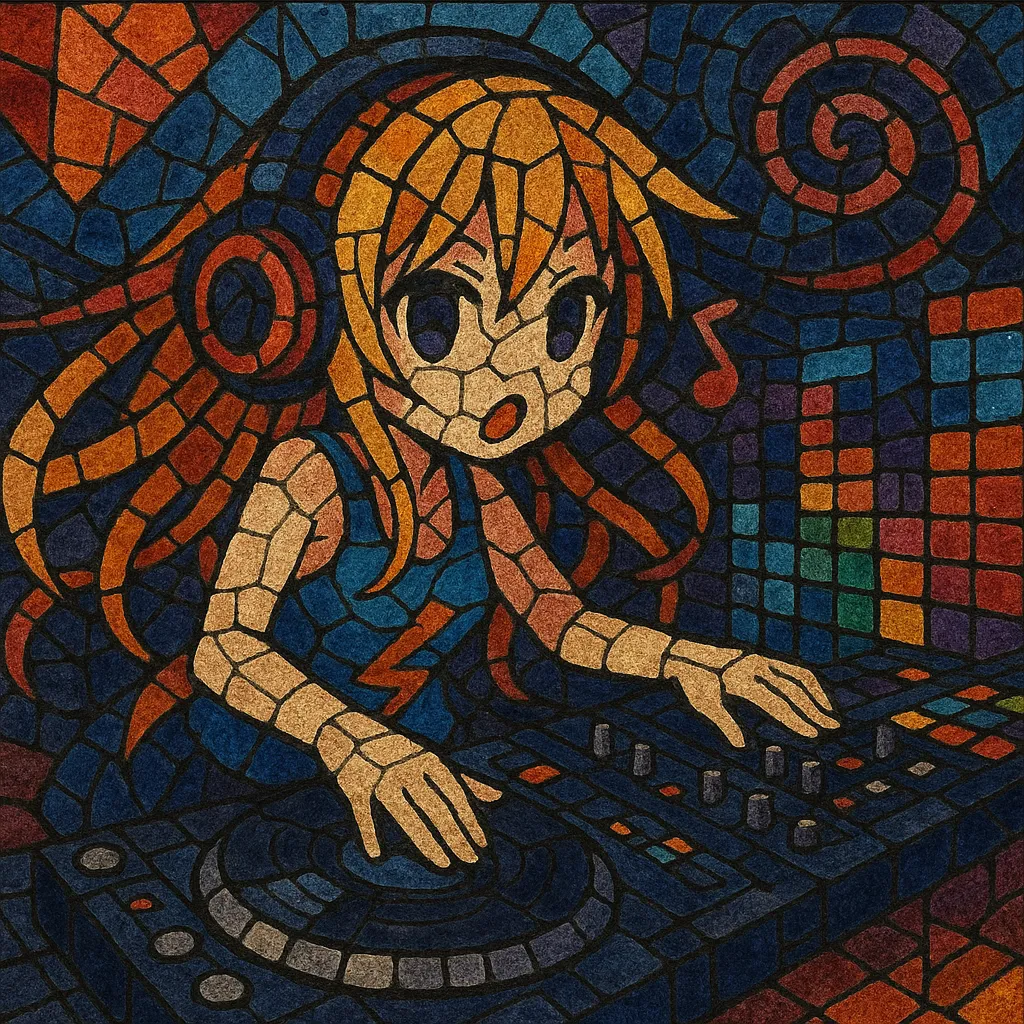J-core is a Japanese take on hardcore techno that fuses high-BPM club structures with otaku culture, game/anime sampling, and brightly melodic writing. It typically sits in the 160–200+ BPM range, using pounding four-on-the-floor kicks, gabber-style distorted low-end, or layered breakbeats.
The style is defined by hyper-melodic leads (often supersaws), euphoric trance harmonies, and chopped/processed voice clips from anime, games, denpa songs, or Vocaloid. Aesthetically it leans kawaii/cute but can swing toward intense, chaotic, or even speedcore extremes. J-core flourished in Japan’s doujin scene and rhythm-game ecosystem, with circles and labels releasing compilations and event-driven tracks.
J-core emerged in Japan’s underground as local producers absorbed European hardcore lineages (gabber, happy hardcore, UK hardcore) and blended them with distinctly Japanese pop-cultural aesthetics. Early pioneers like DJ Sharpnel drew on breakbeat and sample-collage techniques, threading anime/game voice cuts through relentless hardcore frameworks.
Throughout the 2000s, doujin events (M3, Comiket) and the BMS scene (BMS of Fighters) gave producers a grassroots distribution channel. Labels/circles such as SHARPNELSOUND and HARDCORE TANO*C (founded by REDALiCE) consolidated the sound, releasing compilations that mixed euphoric melodies, aggressive kicks, and otaku-centric sampling. The scene thrived on CD-R releases, netlabels, and community events.
Japan’s rhythm-game culture (e.g., Bemani titles) provided a natural home for high-BPM, melody-forward tracks. Producers like kors k, RoughSketch, and DJ TECHNORCH bridged J-core and game music, reinforcing the sound’s tight arrangement, dramatic builds, and peak-friendly drops. Online platforms then globalized the style, circulating tracks and DJ sets well beyond Japan.
In the 2010s, J-core diversified: some artists tilted toward faster speedcore and terror-influenced variants; others leaned into glossy trance/pop harmony or kawaii aesthetics that would later intersect with Vocaloid and internet micro-scenes. Today, J-core remains a flexible umbrella for Japanese-flavored hardcore, from nostalgic sample-collage to modern, polished festival-ready productions.


